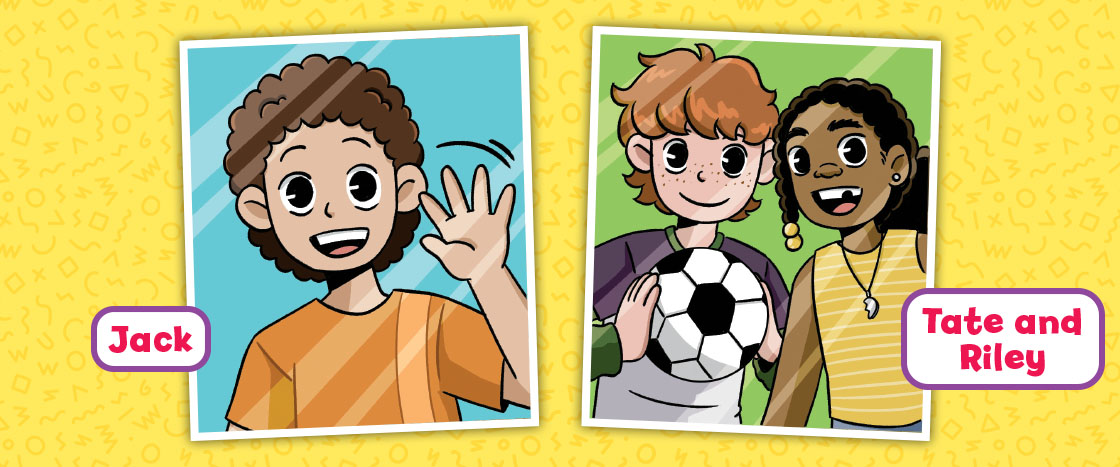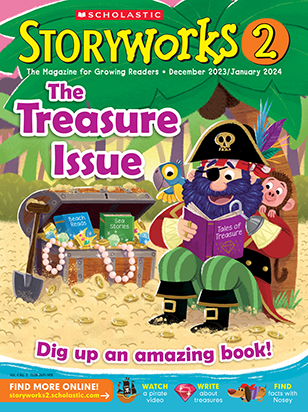
Shannon Wright
Pine School Pals: Get The Ball!
Meet the Pine School second-grade class. Today Jack is having a problem at recess. Find out what happens in Get The Ball!
By Laine Falk
From the October/November 2025 Issue
Learning Objective: Students will practice finding the problem and solution in a fiction story.
Step-by-Step Lesson Plan
Implementation
- Small group; whole group; independent reading
1. Use the Before-Reading Resources
- Watch What’s in a Comic? video (5 minutes)
Show students the video What’s in a Comic? to help them understand features of comics, like speech bubbles, thought bubbles, and more.
Show students the video What’s in a Comic? to help them understand features of comics, like speech bubbles, thought bubbles, and more.
2. Read the Story
Reading Focus: Problem and solution (30 minutes)
- As you begin to read, ask students to pay attention to the problem and solution in the story. Why are Tate and Riley frustrated with Jack? How do they solve their problem?
3. After-Reading Skills Practice
- Problem and Solution: (10 minutes)
This activity helps students reflect on the structure of the comic. First they’ll write down the Pine School Pals’ problem (Jack keeps kicking the ball really far, then making Tate and Riley go get it). Then they’ll write down the solution (Jack finally gets the ball himself, and he stops kicking the ball so far away).
This activity helps students reflect on the structure of the comic. First they’ll write down the Pine School Pals’ problem (Jack keeps kicking the ball really far, then making Tate and Riley go get it). Then they’ll write down the solution (Jack finally gets the ball himself, and he stops kicking the ball so far away).
Special Note on Fluency Practice (20 minutes)
Our Mini Graphic Novels are a great way for kids to practice reading fluency. Here’s how they can do it:
- Have students read the mini graphic novel aloud in small groups. You can assign different students different roles. The characters are all listed on the first page to make this easy.
- After students have practiced with their small groups, they can perform their “play” for the rest of the class (while reading from the magazine—they don’t have to memorize their parts).
- Then you can discuss the story. What was the problem in the story? What was the solution?
Text-to-Speech
